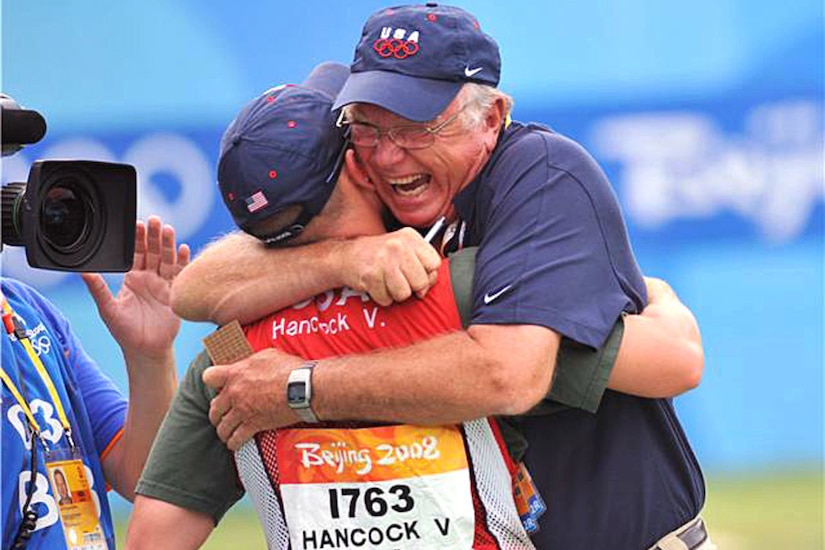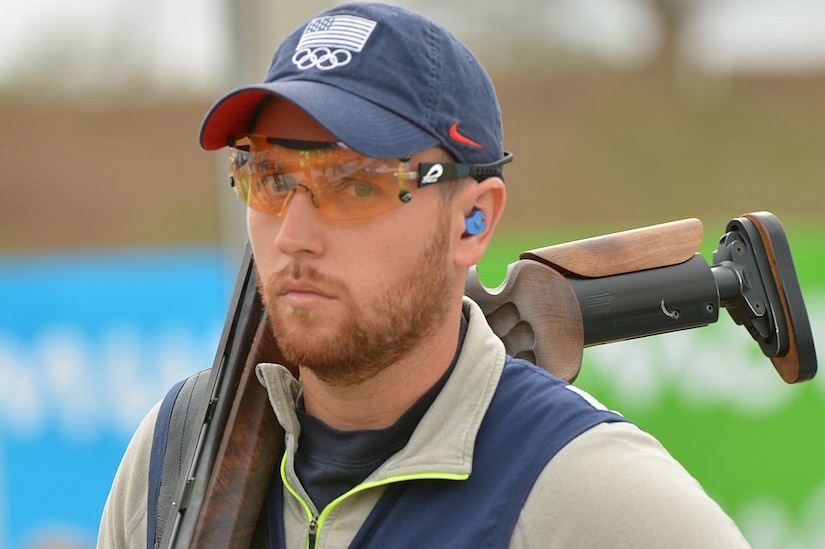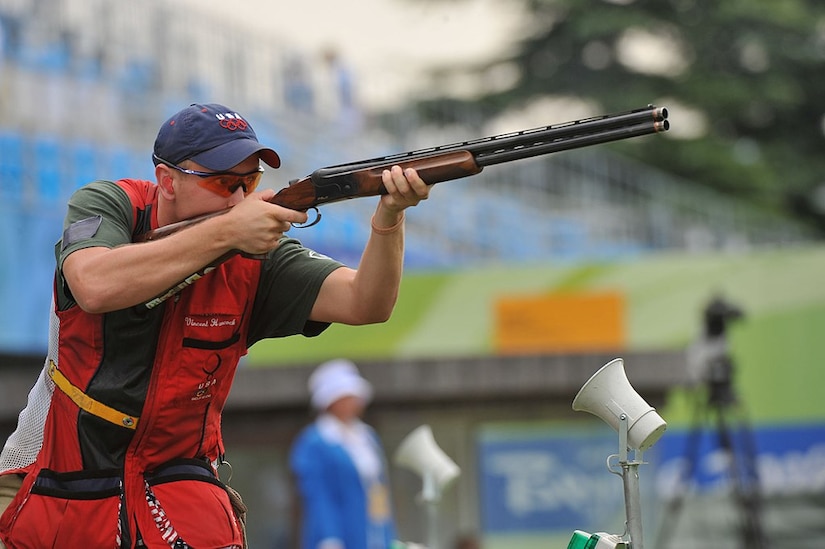Sept. 8, 2020 | , DOD News
In 2005, at the age of 16, Vincent Hancock won his first world championship title in men's skeet. The following year, he joined the Army.
Six years after joining, he said the Army had provided him with something that he couldn't get elsewhere.
"The military has given me a completely different outlook on life," Hancock said. "The determination they have instilled in me and the ability to grasp hold of opportunities is unlike any other. That's what the military instills in their soldiers.
"The military has led me in a direction that I don't think I could have gotten anywhere else," Hancock continued. "The marksmanship unit family that I've come to know over the past six years has just been an amazing company to be in. They have pushed me further than I knew that I could have gone, and they helped mold me into the man I am today."

While still in the Army, Hancock won gold medals in men's skeet at the 2008 Summer Olympics in Beijing and at the 2012 Summer Olympics in London. He is the first skeet shooter to repeat gold in the Olympics.
He also won gold in the men's division in the World Skeet Championships in 2009 and again in 2015. Hancock also represented the U.S. in the 2016 Olympics, but he didn't medal. In 2018, he won the gold again in the World Skeet Championships.
The skills he learned in the Army as part of the Army Marksmanship Unit didn't end when he left the Army in December 2012. He said he's passing those skills on to others. He and his father have started the "Hancock Shooting Academy," where he said participants will learn to be better shooters.
Hancock said it isn't money or more medals that's motivating him now. Instead, he said it's the desire to further the sport of shooting, to bring more enthusiasts into the fold and to teach newcomers what he knows.
"We've had people come to us for lessons that have never even touched a shotgun before, and this is their first time," Hancock said. "My goal for the shooting academy is not just to take the elite-of-the-elite and help them get better; it's to help grow the sport. That's the stage I'm in, in my career right now. I'm not about winning as many medals as possible or making as much money as I can. It's about growing my legacy, being able to pass on the knowledge I've learned over the past 13 years to people all around the nation and all around the world."


Hancock started competing in shooting at age 11, and he said he now wants to do everything he can to promote a sport that has given him a lot.
"Shooting has changed my life so dramatically that I can't compare it to anything else in my life," he said. "Being a part of a U.S. national team and the international skeet community, I got my wife; she was a shooter before we met. It's given me so much; I want to give back."
Hancock lives in Fort Worth, Texas, with his wife, Rebekah, also a shooter, and his two daughters.
More About the Army Marksmanship Unit
In 1956, President Dwight D. Eisenhower authorized the formation of the Army Marksmanship Unit with the almost exclusive goal of winning shooting competitions that would raise the standards of marksmanship throughout the Army.
In the '50s, the Soviets dominated the international shooting scene. Many believed that only the U.S. Army had the personnel and facilities to develop a program that could compete with them.
The unit quickly established itself as a world power in shooting. Between 1962 and 1978, it led the United States to six Olympic gold medals and 59 individual and team championships in international competition.
Later, the unit's mission expanded to facilitate Army recruiting. The unit also provided marksmanship training to thousands of soldiers, and became a leader in small-arms research and development.
From 2009 to 2012, the Army Marksmanship Unit maintained a constant presence in Afghanistan by deploying multiple marksmanship training teams in support of the NATO's Afghan National Army training mission.

The unit is composed of five competitive shooting sections, each with world-class training facilities and competition grounds.
Those teams include: service rifle, action shooting, international rifle, service pistol and shotgun.
These teams have represented the United States during every Summer Olympics since 1960 and have earned 24 Olympic medals since that time.
The unit builds and customizes small arms and ammunition through its Custom Firearms Shop. The Army's finest gunsmiths, machinists, range technicians and ammunition loaders staff the shop. They are known as the backbone, or "pit crew," of the marksmanship teams.
The Custom Firearms Shop's research and development efforts have enhanced the accuracy and reliability of the Army's competitive weapon systems and ammunition and intensified the combat effectiveness of the entire Army.
For example, the M21 and M24 sniper systems — special purpose rifles and squad-designated marksman rifles — were developed and tested in the shop.







No comments:
Post a Comment